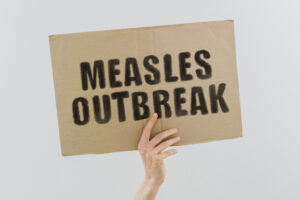
From the implementation of modernized inspection of USDA-regulated facilities to consumer food preparation research and outreach, the agency’s Food Safety and Inspection Service (FSIS) is wending its way through its recently published Roadmap to Reducing Salmonella to drive change through science-based policy.
The roadmap, which outlines programs and policies that are science-based, data-driven, and promote innovation to reduce Salmonella in meat, poultry, and egg products, was initiated to “aggressively target Salmonella,” of which the Interagency Food Safety Analytics Collaboration (IFSAC) has estimated approximately 38% of foodborne salmonellosis in the U.S. is attributed to meat and poultry products.
Although findings from a recent analysis of FSIS data show an overall reduction in the occurrence of Salmonella on meat and poultry products over the past 20 years, the food safety community did not meet the 2020 national public health goal for reduction of Salmonella illnesses. So the roadmap also is intended to help enable achievement of the target set for 2030 and is a visual representation of the activities within the Agency that are directly related to pathogen reduction.
Inspections. While visual inspections of the animals and carcasses is important, microbial pathogens cannot be directly detected by sight or smell. Thus, the goal of modernized inspection is to address the invisible threats and focus resources on the inspection tasks on evidence-based verification activities that directly impact public health and are associated with a reduction in Salmonella or other pathogens in the final product. Thus, the modernized process “is based on thousands of inspection sampling and verification data points and rigorous risk assessments.” Specifically:
- Poultry and Swine. Establishments could choose to operate under a new system which increases the utilization of FSIS inspectors conducting offline inspection tasks that have the biggest impact on public health, while maintaining online carcass-by-carcass inspection. The establishment also must conduct additional establishment microbiological sampling to assess the effectiveness of its food safety system, make decisions that improve pathogen control, and ensure food safety.
- Egg Products. As TAG discussed in the September article Egg Oversight “Modernization” Puts the Onus on Producers, the newly finalized Egg Products Inspection Regulations extends FSIS regulatory authority to egg substitutes and freeze-dried egg products (previously under FDA jurisdiction) and brings egg product inspections more in line with those of meat and poultry products. The rule requires egg products plants to adopt the prevention-focused principles of HACCP, and use science-based decisions to verify that pathogen controls, including controls for Salmonella, are adequate and functioning. FSIS sees this as “creating opportunities for new innovations and measures to control pathogens at egg products plants.”
- Beef Slaughter. FSIS also is considering the modernization of beef slaughter inspection by which establishments can request inspection under a modernized inspection system as part of a waiver program. Establishments can apply for waivers from specific regulations to allow for testing of new procedures, equipment, and processing techniques. Those that receive a waiver must agree to participate in the Salmonella Initiative Program and submit data each month to FSIS for use in future rulemaking.
The Roadmap also includes discussion of:
- The FSIS public health risk evaluations (PHRE) initiative, for which noncompliances identified during inspections that are statistically associated with public health outcomes are analyzed to determine thresholds for early warning and to prioritize establishments for such evaluations. FSIS is refining its process for identifying the most informative triggers for PHREs, food safety assessments (FSAs), and other actions to ensure adequate controls are in place for Salmonella and other hazards.
- Sampling, for which approaches are continually analyzed to optimize public health impact. Some modernization initiatives include moving from Pulsed-Field Gel Electrophoresis to whole genome sequencing (WGS), with continued research on decreasing the turn time, using WGS analyses to inform inspection activities, and more widely sharing results. FSIS also has increased testing for the top seven STECs important to public health; testing of meat and poultry samples for multiple pathogens and indicators simultaneously; and reducing egg products sampling from seven categories to two.
- Adding to the current Salmonella performance standards for poultry products, by proposing standards for Campylobacter in comminuted poultry and Salmonella in ground beef and beef manufacturing trimmings, for which it is analyzing public comments and finalizing the standards. By the end of the year, FSIS plans to propose Salmonella pork performance standards – thus, addressing all major meat and poultry commodities under FSIS authority.
- The development/revision of guidance documents focused on controlling Salmonella. (See pages 14-15 of the Roadmap for a list of these).
- Development of a new consumer education program to identify challenges and drive behavior change.
With overarching goals to reduce Salmonella contamination associated with FSIS-regulated products and meet Healthy People 2030 public health goals, the agency is committed to “lead with science, build relationships, and influence behavior change to reduce Salmonella infections associated with FSIS-regulated products and to save lives.”
Need assistance developing your roadmap or driving change? Give TAG a call. We can help!




